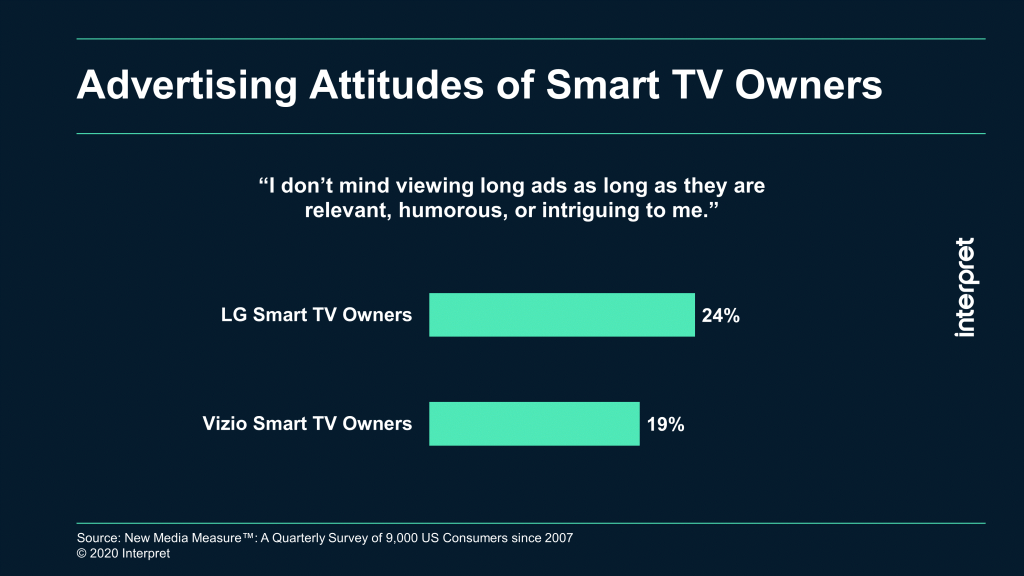While the advertising industry has faced immense challenges in 2020, spending on digital video ads has remained relatively stable during the pandemic. More and more people are using smart televisions to access content nowadays, and that’s opening the door for marketers to better target viewers with addressable advertising.
Smart TVs that can receive addressable TV advertising via automated content recognition (ACR) could, for example, promote one car model to one household and a completely different model to another. Addressable ads typically cost more than linear ads, but experts believe the return on investment is higher because the ad is more relevant to the viewer, with the ability to elicit an emotional response.
Two major smart TV producers, Vizio and LG, are already conducting industry trials. Vizio launched Project OAR (Open Addressable Ready) in March 2019 in partnership with major content providers including Disney, NBCUniversal, CBS, AMC, and others. The consortium is looking to set standards for addressable advertising using an open source, with the goal of not only reaching 10-13 million Vizio TVs, but also smart TVs from competing manufacturers if they are willing to participate. LG, meanwhile, has partnered with Nielsen on AVA (Advanced Video Advertising), which will be using 15 million smart TVs from the popular electronics brand. AVA also has participation from nine national content providers, including Disney, Fox, NBCUniversal, AMC, WarnerMedia, and more.
In an era where viewers can watch whatever they want on-demand, most are not very tolerant of commercials. Interpret’s New Media Measure® shows that two-thirds of LG TV owners and Vizio TV owners prefer to skip ads whenever possible. That said, when viewers are presented with advertising content that is more relevant or intriguing, about one quarter (24%) of LG TV owners are okay with watching a longer ad compared with 19% of Vizio TV owners. For marketers who wish to better target viewers with addressable ads, keeping an eye on ad tolerance and viewing behaviors will be key.






